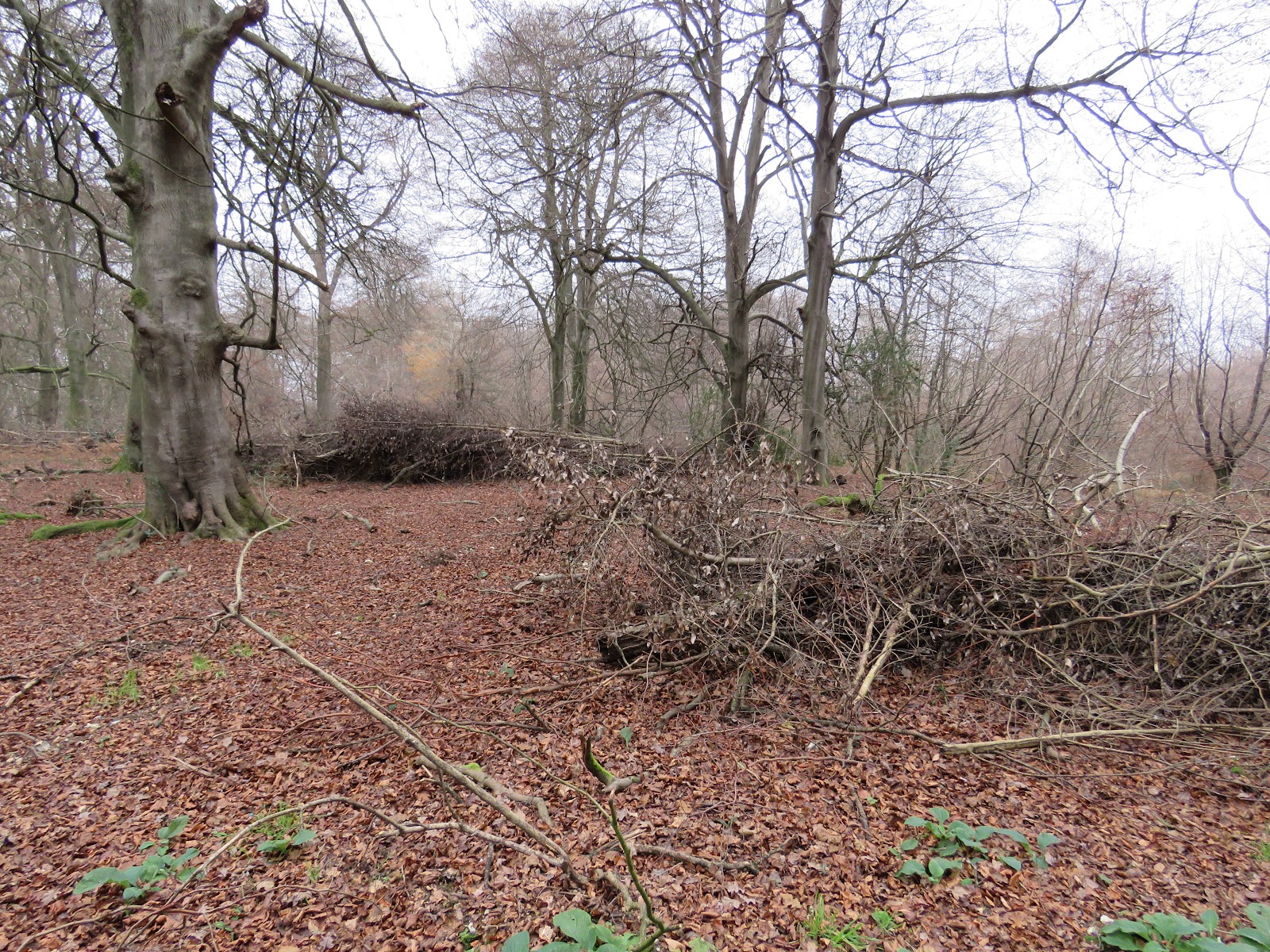Looking after the land
Yesterday found me wandering the many footpaths that cross the large expanse of Ranmore Common - in reality more woodland than common. The birds were, as expected in a winter woodland, hard to come by, but when I did come across them they were in number, highlights being 115 Brambling, a lone Hawfinch and a healthy count of 12 Marsh Tits.
The National Trust, who own the land, have been hard at work in recent months. A number of rides have been widened and reconfigured, changing the dead-straight passageways into meandering clearings. This opens up the habitat, creates micro-climates and creates additional woodland edge. In other areas there has been an opening up of some of the woodland, with aggressive understory removed. It was good to see that this 'dead' wood has been left on site, piled up as in the photograph above. These were proving to be attractive to birds, with plenty of tits, nuthatches and finches within them, seeking out food.
I also came across a large part of the common that is being restored to wild flower meadow (below). Wide-scale removal of species such as Holly has left an open vista, with a number of Barn Owl boxes in place. As to whether or not any owls are tempted, and the viability of the wildflower seedbank, time will tell.





Comments
When I'm in Surrey at my partner's house - she lives at Blackwater nr. Camberley - and I wander the numerous heaths and woods near her, I'm always surprised how quiet they are birdwise, coming from the always noisy marshes and coast of Sheppey. The other thing that is also prominent in these heaths is the relentless spread of Silver Birch, it spreads almost as easily and badly as thistles and is a nightmare to keep from smothering the heaths.
Derek - this is the most energetic habitat management that I’ve seen from the NT. Interestingly enough, little Silver Birch here.